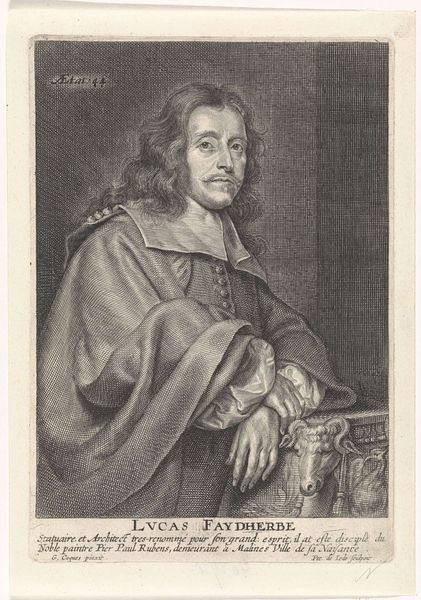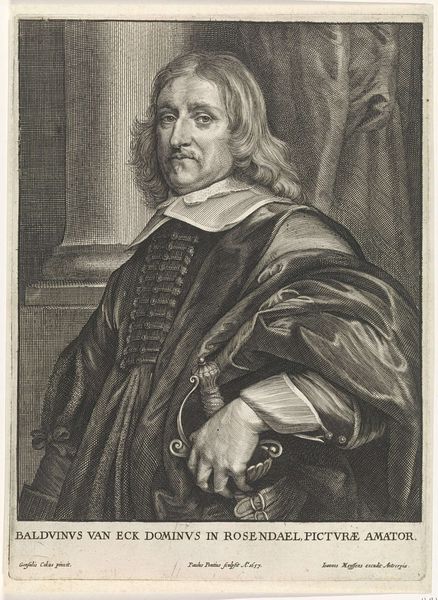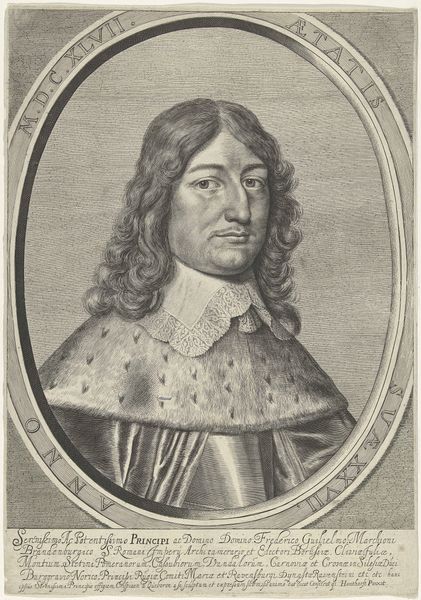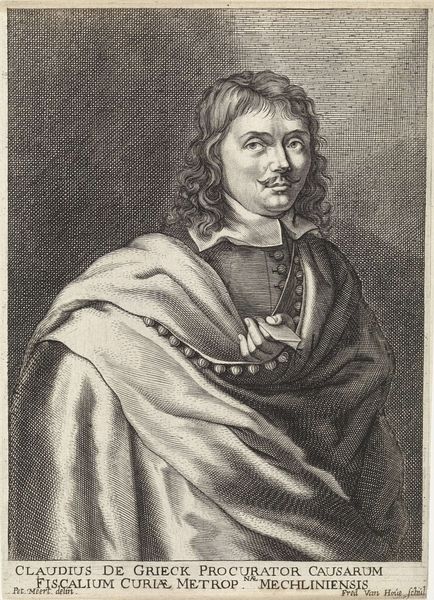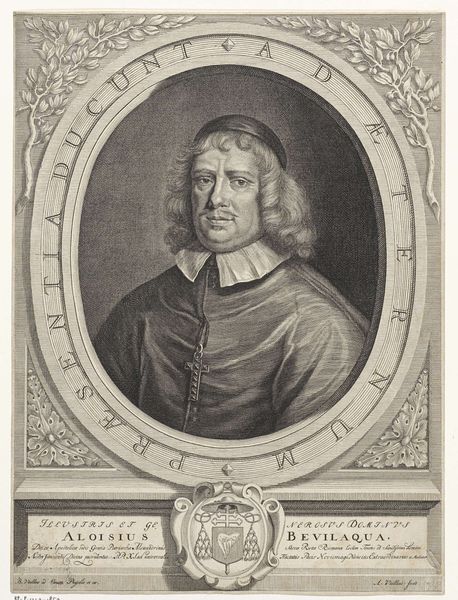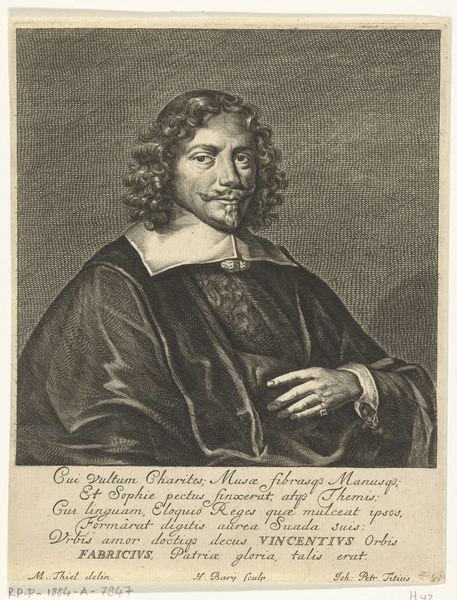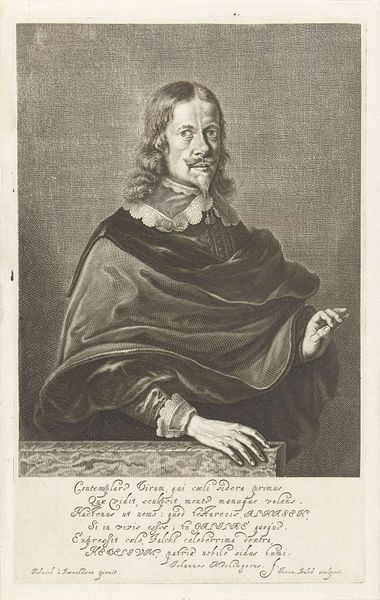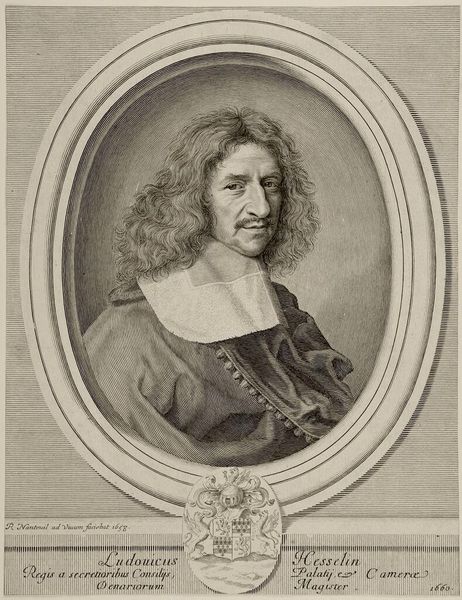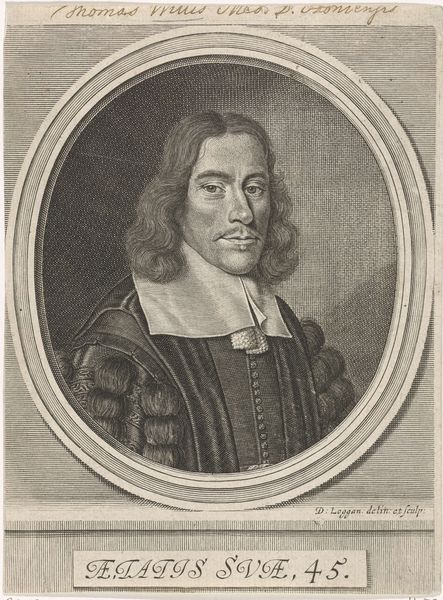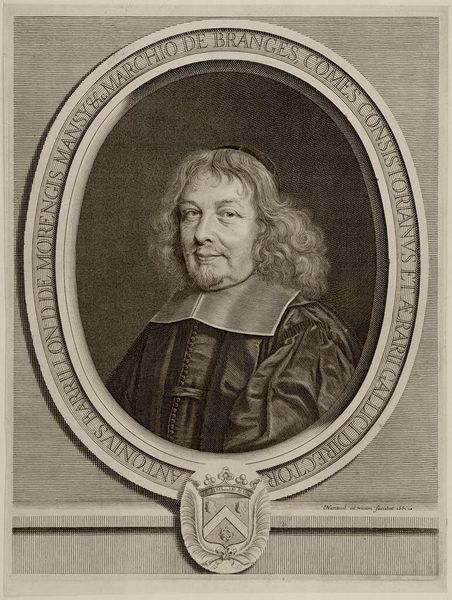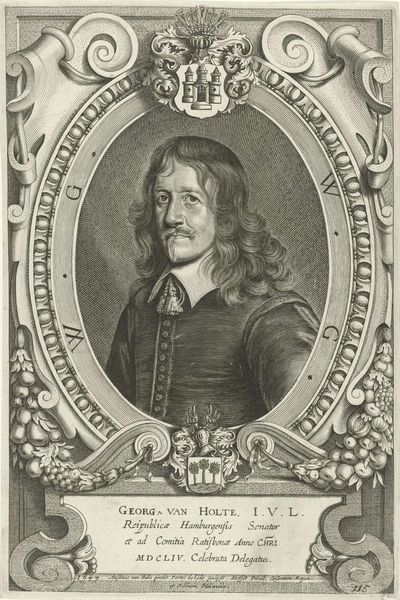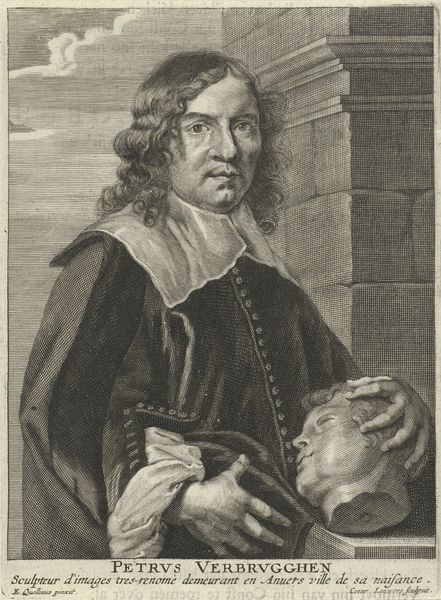
#
pencil drawn
#
toned paper
#
facial expression drawing
#
pencil sketch
#
charcoal drawing
#
charcoal art
#
portrait reference
#
pencil drawing
#
portrait drawing
#
portrait art
Dimensions: height 282 mm, width 208 mm
Copyright: Rijks Museum: Open Domain
Curator: Before us is "Portret van Frederik Willem van Brandenburg" made sometime between 1640 and 1676 by Theodor Matham. It’s currently housed at the Rijksmuseum. Editor: He looks rather severe, doesn't he? It's the slight downturn of his lips and heavy brow that create this mood. There’s also something about the linear precision of the lines contrasting with the lushness of his attire. Curator: Note how Matham utilizes varied textures within the print medium itself. See the difference in hatching density that defines both the opulence of his robes and the more subdued rendering of his facial features? It establishes a visual hierarchy. Editor: Right, that sable fur screams status. But it’s also strategically placed – directing the viewer's gaze towards his face. It does tell us something about the subject – Frederik Willem – who, as the historical record shows, was a very powerful figure consolidating Prussian territories. Curator: Absolutely. Matham masterfully captures the subject's sense of authority. The way he holds the baton reinforces the sense of power, although his hand seems a little dainty in contrast to the facial structure, disrupting what might be read as conventionally masculine features. Editor: Do you think there's a commentary on the burden of leadership at play? His face carries a weight, like the anxieties of the Thirty Years War marked him. How much did these portraits serve as propagandistic tools to consolidate power? Curator: Portraits in this era served multiple purposes. Functioning not only as records of appearance but also constructed representations designed to project specific qualities—legitimacy and divine right, among others. His serious gaze attempts to look resolute despite a conflict-riddled era. Editor: Right. It brings forward questions around what is absent too – the violence and political upheaval is only suggested in this portrait – we're not actively invited to reflect on it. Curator: Perhaps. But the strength of the artwork relies on the construction and juxtaposition of detail that reveals both artistic process and historical context. Editor: Precisely. Seeing how it makes you question the intersection of art, power, and individual stories. Curator: Agreed, a powerful testament to artistic talent and historical forces.
Comments
No comments
Be the first to comment and join the conversation on the ultimate creative platform.
